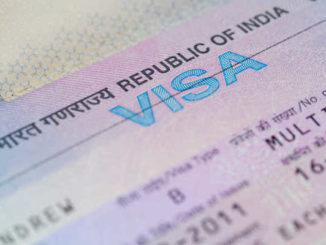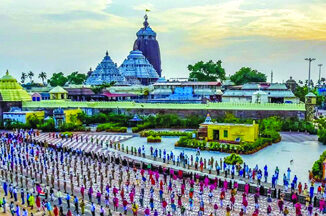
As the first rays of the sun gild the Bay of Bengal, the sleepy streets of Pondicherry awaken to a rhythm that is both ancient and timeless. The sea breeze carries whispers of French chansons mingled with temple bells and the aroma of freshly brewed filter coffee. There’s something ethereal about this coastal haven – something that soothes even the most restless traveler.
Pondicherry, now officially Puducherry, is not just a destination; it’s a mood – a delicate blend of European grace, Tamil warmth, and spiritual quietude. It invites you to slow down, to walk barefoot on its beaches, to sip coffee under bougainvillea-covered balconies, and to discover the poetry hidden in its pastel walls.
A Legacy Written in Two Languages
Pondicherry’s story is one of cultural confluence. Once a small fishing village, it became the French capital in India in the 17th century and remained so until 1954. The French influence lingers – not as nostalgia, but as a living identity.
The city is divided into
two distinct quarters:
– The White Town (Ville Blanche) – with its elegant colonial architecture, chic boutiques, and European-style cafés.
– The Tamil Quarter (Ville Noire) – with its bustling bazaars, traditional homes with Thinnai verandahs, and vibrant local life.
Walking from one to the other feels like crossing continents in minutes – the fusion of France and India, of baguettes and idlis, of serenity and spice.
The French Quarter: A Pastel Dream
The French Quarter is Pondicherry’s soul – a vision in ochre, mustard, and ivory. Streets bear names like Rue Dumas and Rue Romain Rolland, and old colonial buildings wear their age gracefully under cascades of bougainvillea.
Here, the Hotel de l’Orient, La Villa, and Maison Perumal transport visitors to another era – where cane furniture, high ceilings, and heritage courtyards whisper stories of merchants and missionaries.
Cafés such as Le Café (right on the Promenade), Café des Arts, and Coromandel Café are perfect for lazy mornings with espresso and croissants, while art galleries like Cluny Embroidery Centre and Studio Indigo showcase Pondicherry’s creative soul.
The Promenade: Where Sea Meets Spirit
Stretching for 1.5 kilometers along the Bay of Bengal, the Rock Beach Promenade is Pondicherry’s heartbeat. Mornings here begin with joggers and yoga practitioners saluting the sun, while evenings belong to storytellers, lovers, and photographers.
Landmarks such as the Gandhi Statue, Old Lighthouse, War Memorial, and French Consulate stand as graceful reminders of the town’s colonial past. The absence of traffic during evenings turns the seafront into a pedestrian paradise, where the only sound is that of the waves and the occasional laughter from nearby cafés.
Aurobindo Ashram: Inward Journeys
Few places in India evoke stillness like the Sri Aurobindo Ashram. Founded in 1926 by Sri Aurobindo and The Mother (Mirra Alfassa), this spiritual community focuses on Integral Yoga – a philosophy that seeks harmony between material and spiritual existence.
Inside the ashram’s shaded courtyard, devotees gather around the flower-decked marble samadhi of Sri Aurobindo and The Mother. The silence here is profound, almost tangible – broken only by the rustling of frangipani leaves.
The ashram also supports several community projects – schools, handmade paper factories, art galleries, and cottage industries – all reflecting the ideals of selfless service and creative living.
Auroville: The City of Human Unity
A short drive from central Pondicherry lies Auroville, the utopian township envisioned by The Mother and inaugurated in 1968. It is not a tourist site in the conventional sense – it is a living experiment in human unity and sustainable living.
At its center stands the Matrimandir, a magnificent golden sphere surrounded by sprawling gardens and meditation pathways. It is often called the Soul of Auroville, a place meant for silent concentration and inner discovery.
Visitors can explore Auroville’s handicraft boutiques, organic cafés, art studios, and eco-villages, which promote conscious living. The Auroville Bakery, Naturellement Garden Café, and Solar Kitchen offer wholesome meals made from locally grown produce.
Sacred and Scenic: Temples, Churches, and More
Pondicherry’s spiritual harmony extends to its places of worship.
The Manakula Vinayagar Temple, near the ashram, is an ancient shrine dedicated to Lord Ganesha, where an elephant named Lakshmi blesses devotees.
The Sacred Heart Basilica and Immaculate Conception Cathedral stand as grand examples of Gothic and Baroque architecture, their interiors bathed in soft stained-glass light.
The Varadaraja Perumal Temple, adorned with ornate gopurams, showcases classical Tamil craftsmanship.
This seamless coexistence of faiths – Hinduism, Christianity, Islam, and beyond – adds to Pondicherry’s tranquil charm.
Culinary Harmony: A Feast for All Senses
In Pondicherry, the cuisine is a reflection of its cosmopolitan character. The Franco-Tamil fusion is irresistible – think of seafood bouillabaisse infused with Indian spices, creole curries, and crusty French bread paired with coconut chutney. Try Le Dupleix or La Villa Shanti for fine dining, Baker Street for patisserie perfection, or Chez Pushpa for authentic Creole dishes. Local favorites include prawn masala, prawn vindaloo, chicken roast with coconut milk, and the refreshing nimbu soda sold by beachside vendors.
The best way to experience Pondicherry’s food is to wander – let the aroma guide you, whether to a street stall or a chic colonial café.
Beaches and Beyond
Paradise Beach (Chunnambar) lives up to its name – accessible by boat, fringed with palms, and perfect for a quiet swim.
Serenity Beach, dotted with surf shacks and fishing boats, attracts both surfers and solitude seekers.
Auroville Beach is ideal for morning walks and evening meditations.
Just beyond the city, the fishing villages of Veerampattinam and Tantipalayam offer a glimpse into the rhythm of coastal Tamil life – nets drying in the sun, children playing cricket by the shore, and fishermen mending their boats at dusk.





fycgdz
fycgdz
bm219y